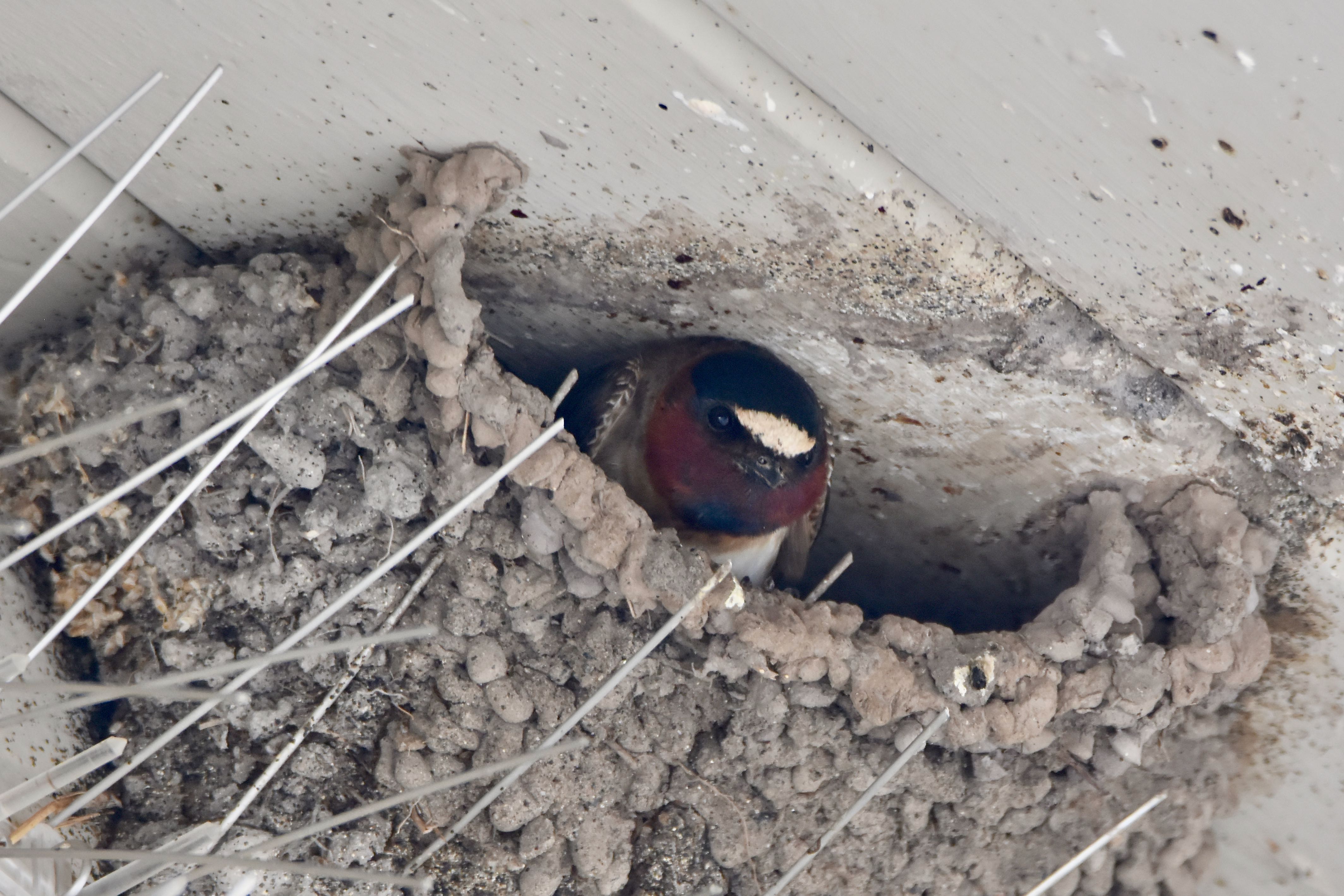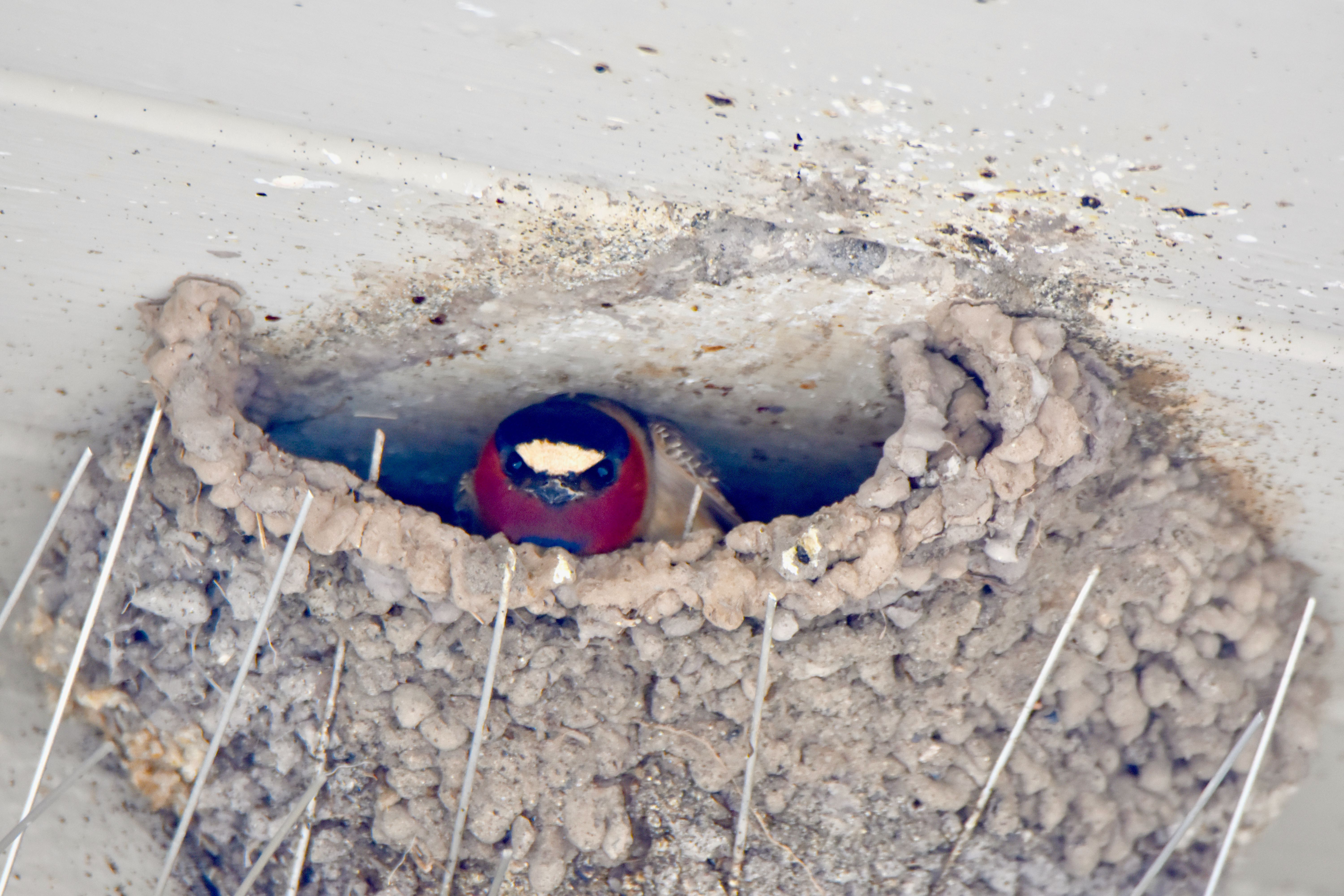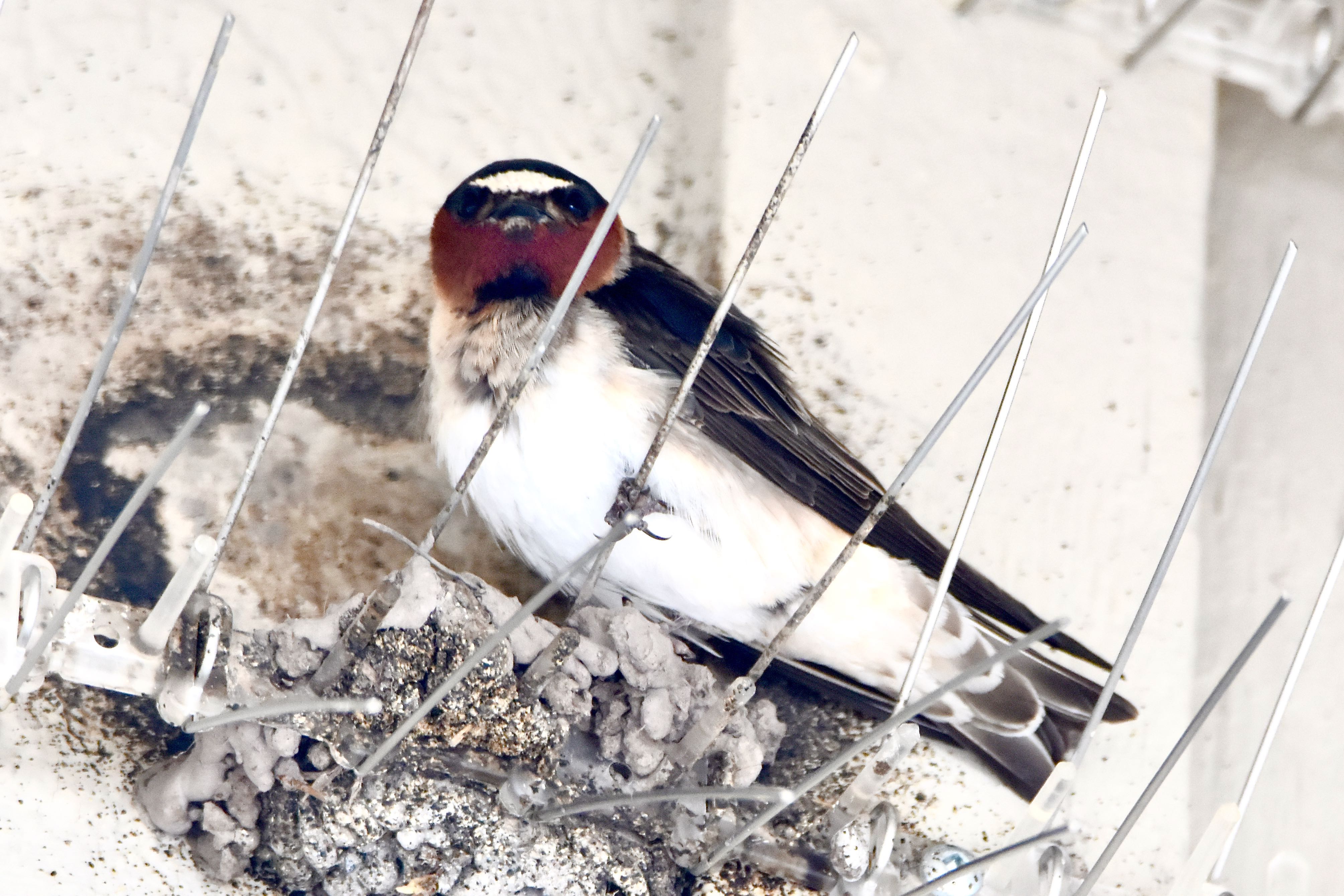
Cliff swallow, photographed at Yellowstone National Park, Wyoming, in June 2017.
If by some chance you spot a cliff swallow nesting in the Sunshine State, you might want to give the Florida Fish and Wildlife Conservation Commission a call, because what you’ve seen is something extremely rare.
Cliff swallows, Petrochelidon pyrrhonota, are most commonly seen passing through Florida in the spring on their way to points north. There are some records of them nesting in Florida, but generally speaking, cliff swallows eschew not only Florida, but most of the southeastern United States, seen in the region only during migration. In fact, they’re uncommon nesters east of the Mississippi.
Cliff swallows are small as swallows go, less than six inches in length, but with a wingspan equal to twice their body. They have a dark blue skull cap, blue wings and back, a rich-red face and a white patch between the eyes. The underside is white.
In natural settings, these birds nest on the sides of cliffs, hence the name. With human development, cliff swallows have taken to using buildings, bridges and culverts, which has allowed them to expand beyond their historic range.
They nest in most of North America, including the Arctic, but they are most common in the west. Unlike some birds that fly nonstop for days during migration, cliff swallows make a more leisurely trip through the Caribbean, Mexico and Central America to their winter refuges in southern South America. They are social birds, sometimes nesting in colonies of a thousand or more, and migrating in large flocks.
The nest itself is made of mud, generally described as gourd-shaped, situated near water and a source of mud. Clutches are generally three or four eggs, which both parents incubate for about two weeks, give or take. Both parents feed their offspring, which fledge three to four weeks after hatching.
The first cliff swallow nests found in Florida were under a bridge over the St. Lucie Canal near Port Mayaca in western Martin County in 1975. In 1978, a cluster of five nests were found in the same area, two of which were occupied. In the early ‘90s, the FWC searched the area of evidence of cliff swallow nesting, and found none, although they did spot one cliff swallow in flight.
About five years ago, members of Miami-Dade chapter of the Audubon Society found both cliff and cave swallows nesting under bridges along Florida’s Turnpike near Homestead.
Sightings of nesting cliff swallows might become more common in coming years, as the birds generally expand their range south and east, but for now, they’re still rare in Florida.
Cliff swallows are members of Hirundinidae, the swallow family.



